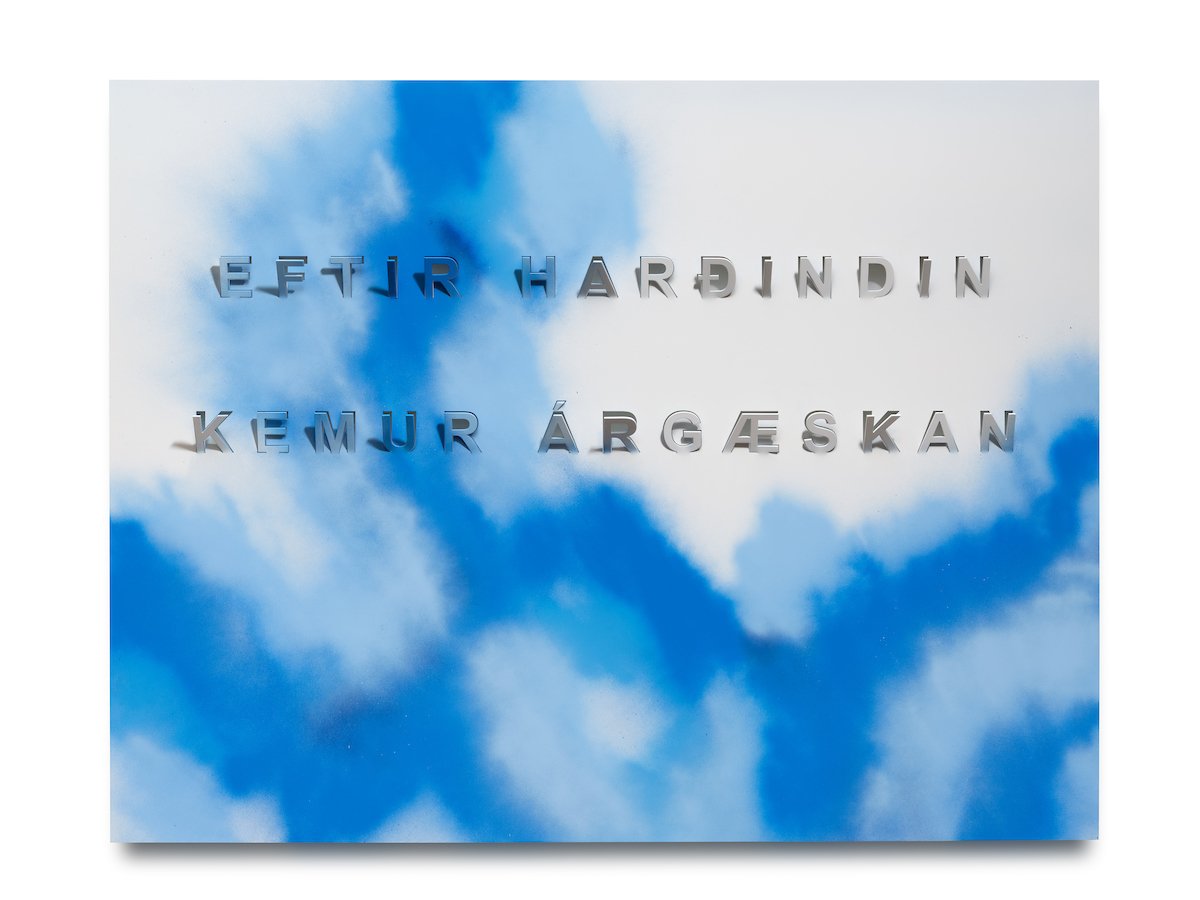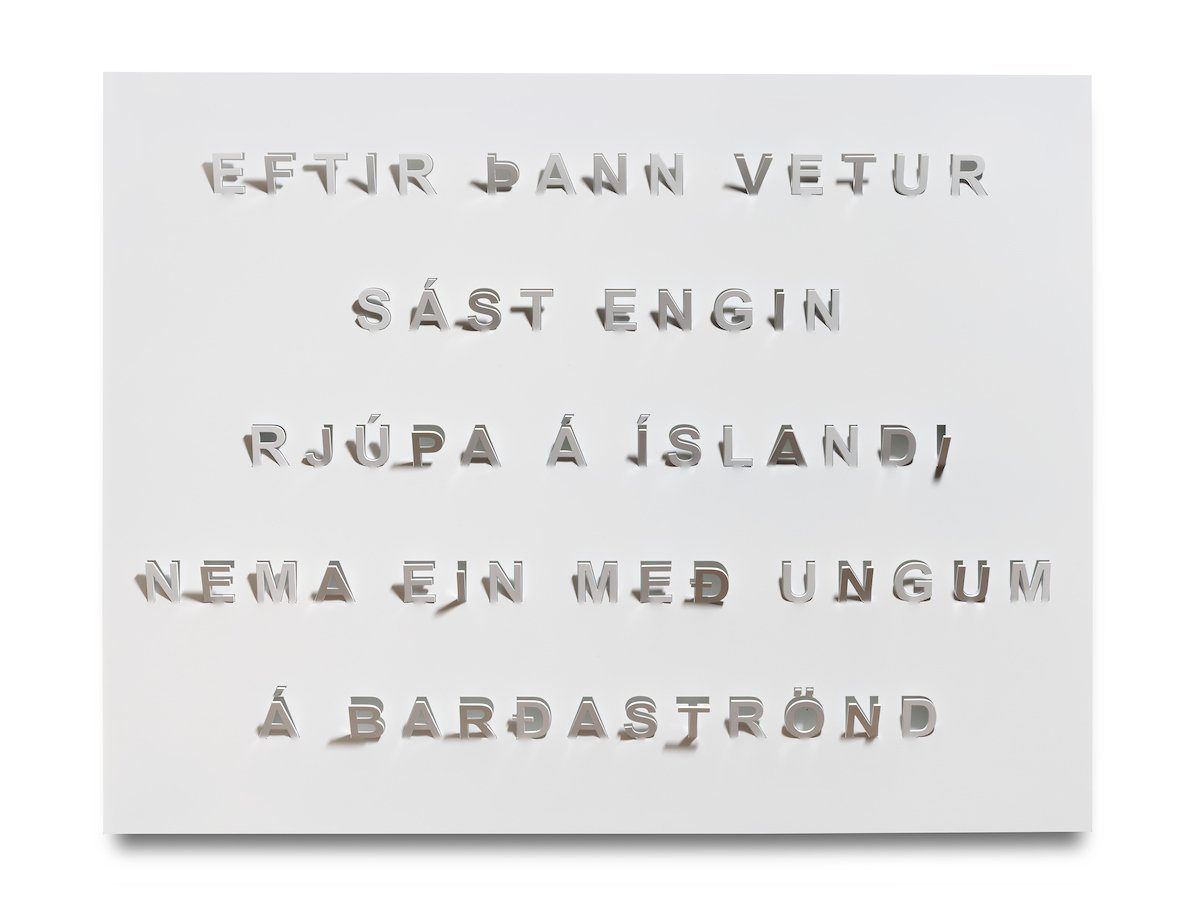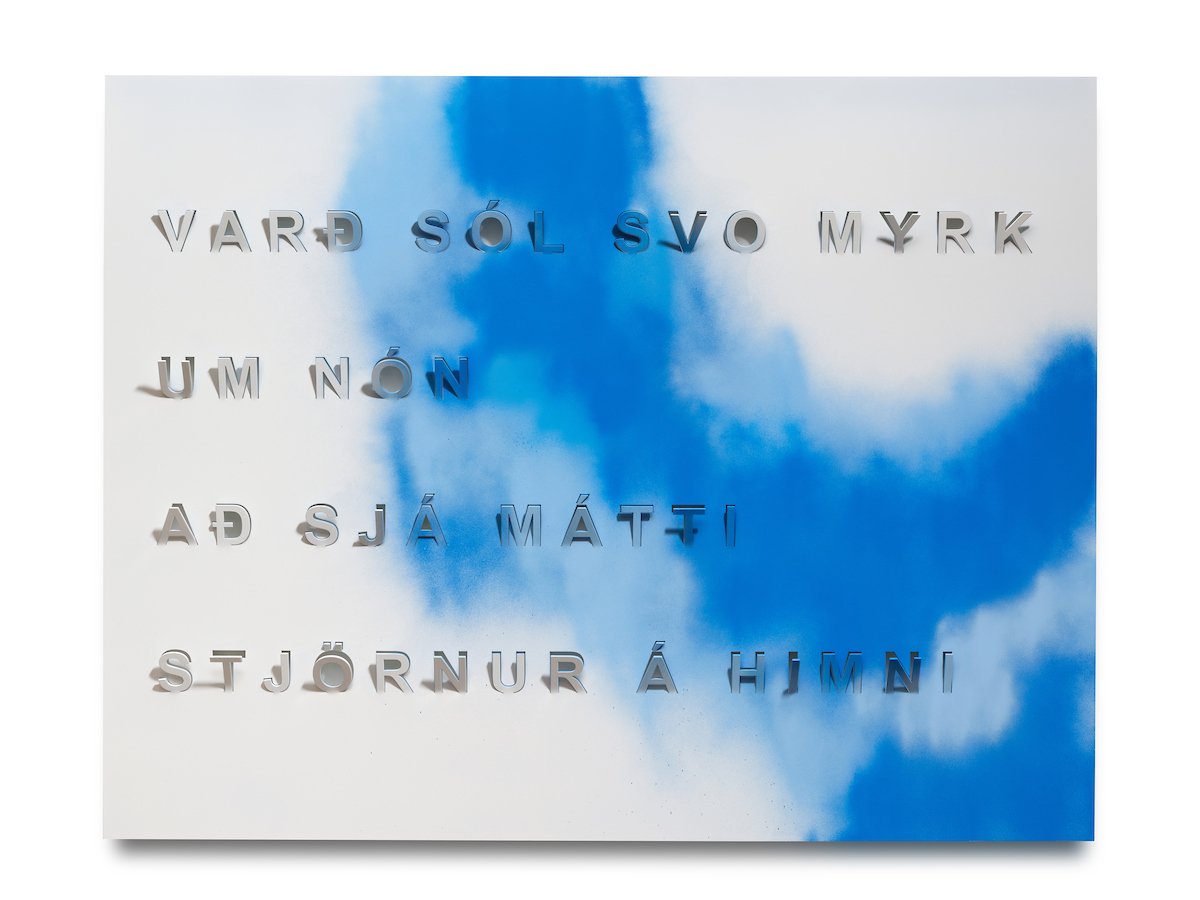





Text work, 2021
Aluminum, polypainting and spray.
Size 130x100cm
The solo exhibition Winter calm was presented in Hofi Cultural and Conference Centre in Akureyri, 2021. The exhibition consisted of eight textual works.
Photo credit Vigfús Birgisson.
Winter Calm
In Iceland, there are really only two, almost equally long, seasons: Winter and not-winter. Winter from around the middle of October until the end of April. Half the year is winter: Cold and dark, sometimes encumbering. Navy blue colours, white nuances. Rough weathers, growing low-pressure areas. In winter, shades of light and silent nights become perpetual food for thought. Regardless, it is neither the light nor lack thereof that determines a hard or mild winter. The rhythm of light is always the same, winter darkness passes.
The silence that accompanies the calm forms a contrast to the winter hours; the calm that comes out of nowhere and doesn’t merit a thought between low-pressure areas. The calm distinguishes a good winter from bad. Thus, winter calm is one of these things one doesn’t really think about. Winter calm plays the same role in separating seasons as the space between letters and words in the language, it is an essential part of the meaning.
These two almost opposite words: Winter and calm, define the works in this exhibition. Each artwork references a year or weather reports from annals. Terse descriptions that portray a year or the Icelandic weather in general. By the words Great Snow Winter, every hour of the people who lived in the year 1078 is brought together in one descriptive term, coined in the Resens Annal at a time when words were precious. This calm simplicity contains a savage beauty.
There is also another, terrifying beauty to be found in the destructiveness of weathers and winter hardship. Weathers that break both vessels and churches. Weathers that crush people. These words are used to describe the winter 1778 in the Espihóll Annal: Destitution … people were too weak from hunger to attend to their duties. Four people died of hunger in Ólafsfjörður, the odd person in other places … And this account is from the Ballará Annal, describing the end of April/start of May in 1615: In spring, during Two Apostles Mass, 13 boats were lost in Breiðafjörður in a frightful northerly blizzard; it was relatively quiet in the morning, broke around nine o’clock and lasted until midnight … 80 people drowned in Breiðafjörður that day.
Against this awfulness: The weather, history, heartless winter cold and everything that comes with our existence as human beings on this island, there is still some feeling implicit in how the words cast a light on its understanding. By enlarging the descriptions, you not only feel your smallness against the magnificence of the weather and the overwhelming grandeur of winter. You also feel something else: That there is warmth in experiencing these olden times through the straightforward, poetic language.
This is what words like winter calm remind us of. Our experience of changes in weather and the winter isn’t limited to the outdoors. We mostly experience it in our head, through words. This thought creates a calm of sorts alongside the heaving frost. From there, the memory of prosperity is only a stone’s throw away; that it will return once the hardship passes.
